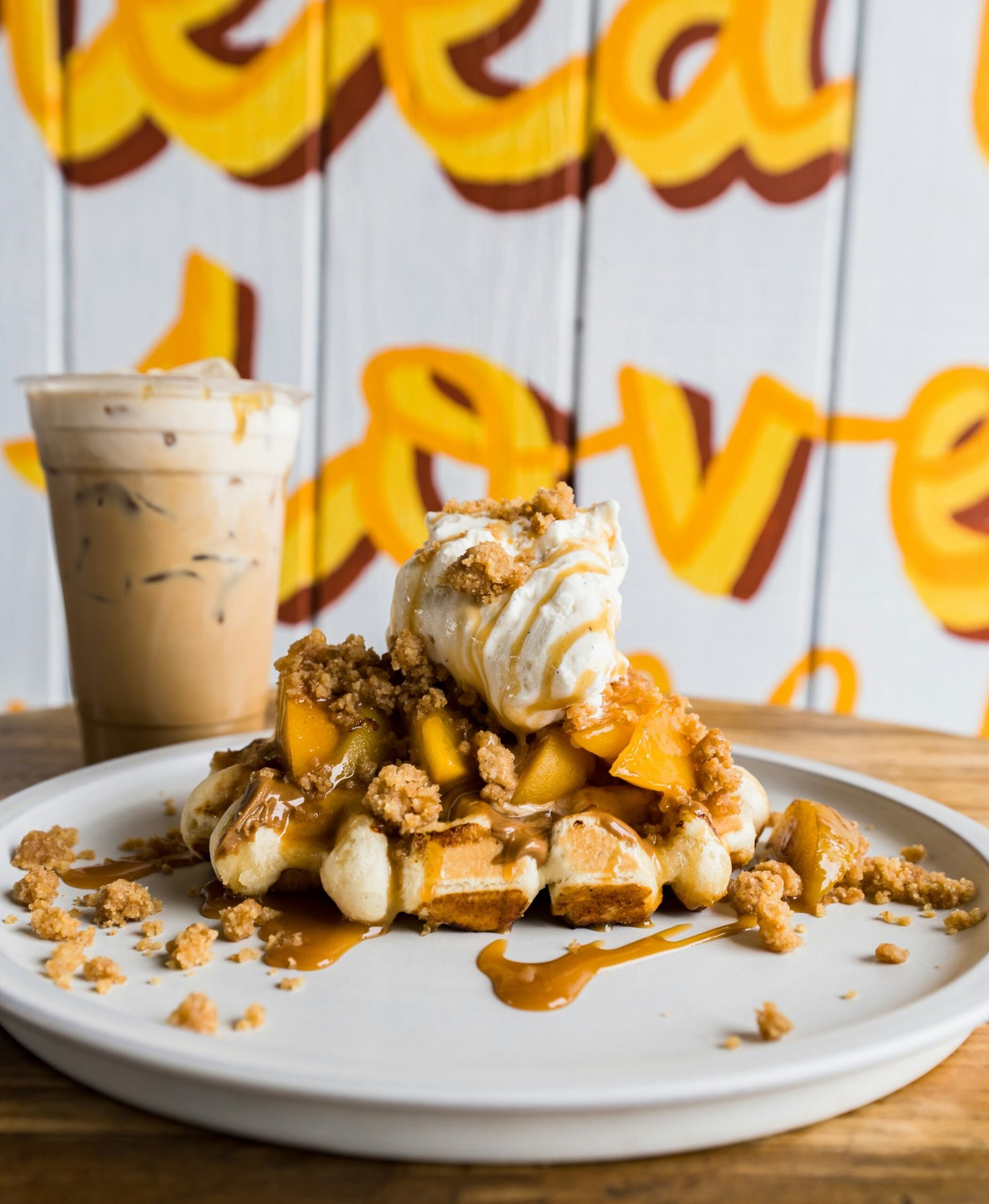Understanding Micro-Influencers
Micro-influencers are social media users who have built a following ranging from 1,000 to 100,000 followers. They occupy a unique position within the influencer marketing landscape, as their follower count is significantly smaller than that of macro or mega influencers, yet their impact can be remarkably greater. These individuals often specialize in niche markets, focusing on specific areas of interest such as fitness, beauty, travel, or food. This targeted approach allows them to cultivate highly engaged communities that share common values and interests.
The appeal of micro-influencers lies in their authenticity and relatability. Unlike larger influencers, who may reach vast audiences yet struggle to maintain strong connections with their followers, micro-influencers typically foster intimate relationships within their communities. Their content often feels more genuine, which is crucial in an era where consumers are increasingly seeking authenticity in marketing. Brands recognize that partnering with micro-influencers can lead to higher engagement rates, as these influencers tend to receive more likes, comments, and shares per post compared to their larger counterparts.
Additionally, marketing with micro-influencers can often be more cost-effective for brands looking to expand their reach. These influencers are often more willing to collaborate for product exchanges or smaller fee structures, making it feasible for businesses of various sizes to engage in influencer marketing. The targeted niches that micro-influencers represent allow brands to connect with potential customers in a meaningful manner, driving both brand awareness and conversion rates.
As brands continue to pivot towards more personalized marketing strategies, the significance of micro-influencers is becoming increasingly evident. By tapping into their engaged niche audiences, companies can effectively harness the power of micro-influencer collaborations to boost their Instagram growth and overall brand visibility.
The Benefits of Collaborating with Micro-Influencers
In recent years, the landscape of influencer marketing has evolved, leading many brands to recognize the unique advantages of collaborating with micro-influencers. Micro-influencers, typically defined as social media users with a following of 1,000 to 100,000, often exhibit a closer connection to their audience, leading to more genuine engagement. This authenticity translates to higher levels of trust among followers, which can benefit brands looking to establish credibility.
One of the primary benefits of working with micro-influencers is cost-effectiveness. Compared to traditional influencers, who can charge exorbitant fees for promotion, micro-influencers typically request lower compensation in exchange for their services, such as product discounts or free samples. This is particularly advantageous for small to medium-sized businesses looking to maximize their marketing budgets while still achieving impactful results.
Moreover, micro-influencers tend to have a more targeted audience, which allows brands to reach niche markets effectively. These influencers are often seen as experts or enthusiasts in specific domains, such as health, fitness, beauty, or technology. By collaborating with these influencers, brands can capitalize on their established reputations and engage directly with consumers who are most likely to be interested in their products.
A pertinent case study is that of a skincare brand that enlisted the help of several micro-influencers, focusing on organic and cruelty-free products. The campaign not only saw increased engagement but also resulted in a substantial rise in sales, showcasing how effective these collaborations can be. Notably, the authenticity of messaging and passion conveyed by the micro-influencers resonated deeply with their audiences, further enhancing brand loyalty.
In conclusion, partnering with micro-influencers allows brands to achieve significant advantages, including cost savings, authentic engagement, and access to targeted audiences, contributing to trust and credibility among consumers.
Identifying the Right Micro-Influencers for Your Brand
Finding the right micro-influencer for your brand is a crucial step in maximizing the effectiveness of your Instagram growth strategy. Micro-influencers, typically defined as individuals with follower counts ranging from 1,000 to 100,000, often possess a more engaged and dedicated audience compared to larger influencers. This characteristic makes them particularly valuable when seeking authentic connections with potential customers. Identifying suitable micro-influencers begins with aligning your brand values and target audience with those of the influencer.
Utilizing various tools and platforms designed for influencer discovery is essential in this search. Websites such as Upfluence, Traackr, and AspireIQ provide databases where brands can filter influencers based on niche, audience demographics, and engagement rates. By leveraging these resources, brands can create a targeted list of micro-influencers who resonate with their core values and mission. This strategic approach allows brands to invest their efforts in partnerships that are more likely to produce positive results.
When evaluating potential micro-influencers, consider their engagement metrics, such as likes, comments, and shares. High engagement rates usually indicate that the influencer has a loyal following that actively interacts with their content. Assessing the quality of their interaction is equally important; do followers ask questions, or share their own experiences? This kind of genuine connection suggests that the influencer has cultivated a trusted relationship with their audience.
Finally, look for micro-influencers who maintain transparency and authenticity in their posts. Those who frequently engage with their followers and deliver honest feedback create a sense of community. By following these steps, brands can effectively identify and select micro-influencers, paving the way for successful collaborations that drive Instagram growth while staying true to the brand’s values and mission.
Creating Engaging Collaboration Campaigns
Designing effective collaborative campaigns with micro-influencers necessitates a strategic approach that balances creativity with clear objectives. The first step in this process is brainstorming ideas that resonate with both the micro-influencer’s audience and your brand’s identity. It is crucial to consider what types of content speak to the influencer’s followers. Engaging formats might include contests, giveaways, or co-created posts that highlight unique aspects of both the influencer’s personal brand and your products or services. This dual relevance fosters organic engagement and makes the campaign more appealing.
Setting clear, measurable objectives is integral to ensuring that your collaboration yields the desired outcomes. These objectives may encompass increasing brand awareness, boosting engagement rates, or driving traffic to your website. By establishing specific goals upfront, you can tailor the collaboration to meet these targets. For example, if your aim is to increase brand awareness, you may want to focus on visually compelling content that encourages followers to share or comment, thereby expanding your reach. If your goal is to enhance engagement, incorporating interactive elements such as polls or questions in the collaboration can be highly effective.
Once the creative ideas and objectives are outlined, determining the type of content becomes paramount. Consider the platforms used by the micro-influencer and the kind of content that typically garners the most attention. This might include stories, posts, or IGTV videos that showcase your product or service in an authentic context. Collaborating on a series of posts rather than a single piece of content can maintain momentum and interest over a longer period. To further promote authentic engagement, encourage the micro-influencer to incorporate personal anecdotes or experiences related to your brand, enhancing relatability and trust with their audience.
Building Lasting Relationships with Micro-Influencers
In the dynamic landscape of social media marketing, particularly on platforms like Instagram, the significance of establishing enduring relationships with micro-influencers cannot be overstated. Unlike traditional marketing strategies that often rely on large-scale partnerships, collaborating with micro-influencers offers an opportunity to cultivate authentic connections, which can lead to more effective engagement and audience trust.
To foster these lasting relationships, one must prioritize open and consistent communication. Regular updates about your brand, product launches, or changes in marketing strategies not only keep micro-influencers in the loop but also make them feel valued and included in your brand journey. Furthermore, scheduling periodic check-ins and providing feedback on prior collaborations can demonstrate your commitment to their contribution, encouraging a more collaborative atmosphere.
Another crucial aspect to consider is the necessity of providing value to micro-influencers. This can take various forms—be it exclusive access to new products, invitations to special events, or unique discount codes for their followers. By offering these perks, you are not merely incentivizing a single campaign but are investing in the influencer’s growth and success, which can yield dividends down the line in the form of authentic promotion and increased brand loyalty.
Appreciation plays a vital role in nurturing these relationships as well. A simple thank-you note, social media shout-out, or even a small token of appreciation such as a gift can go a long way in reinforcing how much you value their efforts. Acknowledging their hard work publicly not only strengthens your partnership but can also encourage others within their network to engage with your brand further.
Measuring the Success of Micro-Influencer Campaigns
To effectively assess the success of micro-influencer campaigns on Instagram, brands need to establish and track key performance indicators (KPIs) and metrics. These metrics serve as vital benchmarks for evaluating the effectiveness of collaborations and determining the return on investment (ROI). One of the primary KPIs to monitor is engagement rate, which includes likes, comments, and shares relative to the influencer’s follower count. A higher engagement rate indicates that the content resonates with the audience, making it a critical measure of success.
Another important metric to analyze is reach, which reflects the total number of unique users who have seen a post or story. Brands should utilize Instagram Insights or third-party tools to track these data points, as they provide valuable context regarding how far influencer content is spreading. Moreover, analyzing the impressions—total views of a post—offers additional insight into visibility and potential audience interest.
Conversion metrics are also vital for understanding campaign effectiveness, especially for brands aiming to drive sales or leads. This may include tracking referral links, promo codes, or specific landing pages attributed to the influencer. Tools like Google Analytics allow brands to assess website traffic and measure conversions derived from micro-influencer efforts, thus providing clarity on whether the investment aligns with business goals.
Furthermore, brand awareness can be gauged through sentiment analysis and social listening tools, which enable brands to monitor conversations and mentions related to their campaign. By analyzing sentiment, brands can assess public perception and whether the influencer collaboration effectively enhances brand reputation. Through these methods, companies can gain a comprehensive view of micro-influencer campaign outcomes, helping to inform future marketing strategies and collaborations.
Navigating Challenges in Micro-Influencer Collaborations
Collaborating with micro-influencers can offer brands a unique opportunity to engage with niche audiences and enhance their social media presence. However, there are several challenges that brands may encounter during these partnerships. One significant issue is the potential misalignment in values between the brand and the influencer. Brands must carefully select micro-influencers whose personal beliefs, aesthetic, and ethos align with their own. A disconnect in these areas can lead to a lack of authenticity in the collaboration, ultimately diminishing the campaign’s effectiveness.
Another challenge is the communication barrier that may arise during the collaboration process. Micro-influencers may not have the same level of experience as larger influencers, which could lead to misunderstandings regarding campaign expectations, deliverables, and timelines. To mitigate this risk, brands should establish clear communication channels and articulate their expectations from the outset. Regular check-ins and updates can also ensure that the collaboration stays on track and that both parties are aligned throughout the campaign.
Additionally, managing influencer expectations is crucial to the success of micro-influencer collaborations. Micro-influencers may have varying notions of brand partnership outcomes, which might lead to dissatisfaction on either side if goals and expectations are not clearly defined. Brands should set achievable milestones and be transparent about what they hope to accomplish through these collaborations. This transparency helps to build trust, which is essential for a successful partnership.
To effectively navigate the challenges associated with micro-influencer collaborations, brands can deploy various strategies. Conducting thorough research before partnering, maintaining open lines of communication, and providing ongoing support can foster strong relationships with micro-influencers. By addressing these potential obstacles proactively, brands can harness the full potential of micro-influencer collaborations, driving growth and engagement on Instagram.
Case Studies: Successful Micro-Influencer Collaborations
In recent years, numerous brands have recognized the value of collaborating with micro-influencers on Instagram, leading to impressive growth and engagement. One notable example is the partnership between the skincare brand Glossier and micro-influencer community members. By collaborating with influencers who had a genuine affinity for their products, Glossier managed to reach a targeted audience that resonated with their brand ethos. The influencers shared authentic reviews and personalized experiences, resulting in a substantial increase in both follower count and customer engagement. This collaboration created a sense of community that traditional advertising struggled to achieve.
Another exemplary case involves the sustainable clothing brand Reformation. The brand tapped into the influence of micro-influencers who are passionate about sustainability and eco-friendly fashion. By choosing advocates whose values aligned with their own, Reformation fostered a sense of trustworthiness and authenticity. These influencers created rich content showcasing the clothing in real-life settings, which captivated their followers. The outcomes were significant, with Reformation observing a rise in both website traffic and conversions directly linked to these collaborations. This case illustrates how aligning brand values with micro-influencer authenticity can yield significant outcomes.
Moreover, the coffee brand Death Wish Coffee successfully utilized micro-influencers within the gaming niche. By sponsoring gaming micro-influencers who genuinely enjoyed their product, the brand created immersive and relatable content. These influencers shared video reviews and personalized stories about how the coffee fit into their gaming routine. The campaign effectively expanded Death Wish Coffee’s reach within the gaming demographic, resulting in increased brand awareness and sales. The challenge of distinguishing their product in a saturated market was met with creative strategies that leveraged the dedicated followings of their micro-influencer partners.
These case studies highlight the strategic approaches and innovative solutions brands can adopt while collaborating with micro-influencers. By focusing on authenticity and community engagement, brands can harness the power of micro-influencers to drive growth on Instagram.
Future Trends in Micro-Influencer Marketing on Instagram
The landscape of micro-influencer marketing on Instagram is evolving rapidly, driven by advancements in technology, shifts in consumer preferences, and changes in social media algorithms. One of the most significant trends is the increasing emphasis on authenticity and trust. As users become more discerning, they gravitate toward micro-influencers who demonstrate genuine connections with their audience. This shift indicates that brands will need to prioritize partnerships with influencers that align closely with their values and objectives, fostering more meaningful collaborations.
Moreover, technological advancements, including AI and machine learning, are expected to shape the future of influencer marketing. Brands may increasingly rely on data analytics to evaluate the performance of their campaigns and optimize their influencer partnerships. Tools that analyze audience engagement and demographics are becoming essential for brands to ascertain the right fit for their campaigns. This analytical approach will enable businesses to track return on investment more effectively, leading to more strategic investments in micro-influencer collaborations.
Additionally, platforms like Instagram are continually updating their algorithms to prioritize content that resonates with users. Consequently, micro-influencers may gain even greater influence due to their ability to produce authentic content that engages their followers. Brands will likely adapt their strategies to leverage these changes, possibly by focusing on long-term partnerships with influencers who elicit high levels of engagement. This approach not only builds trust with consumers but also enhances brand loyalty among micro-influencer audiences.
Finally, as the market becomes saturated with influencers of all sizes, the need for differentiation will become more critical. Brands will increasingly explore niche markets and targeted audiences through micro-influencer partnerships. As consumer behavior continues to evolve alongside technological innovations, staying ahead of these trends will be essential for brands aiming to harness the power of micro-influencer marketing on Instagram effectively.


